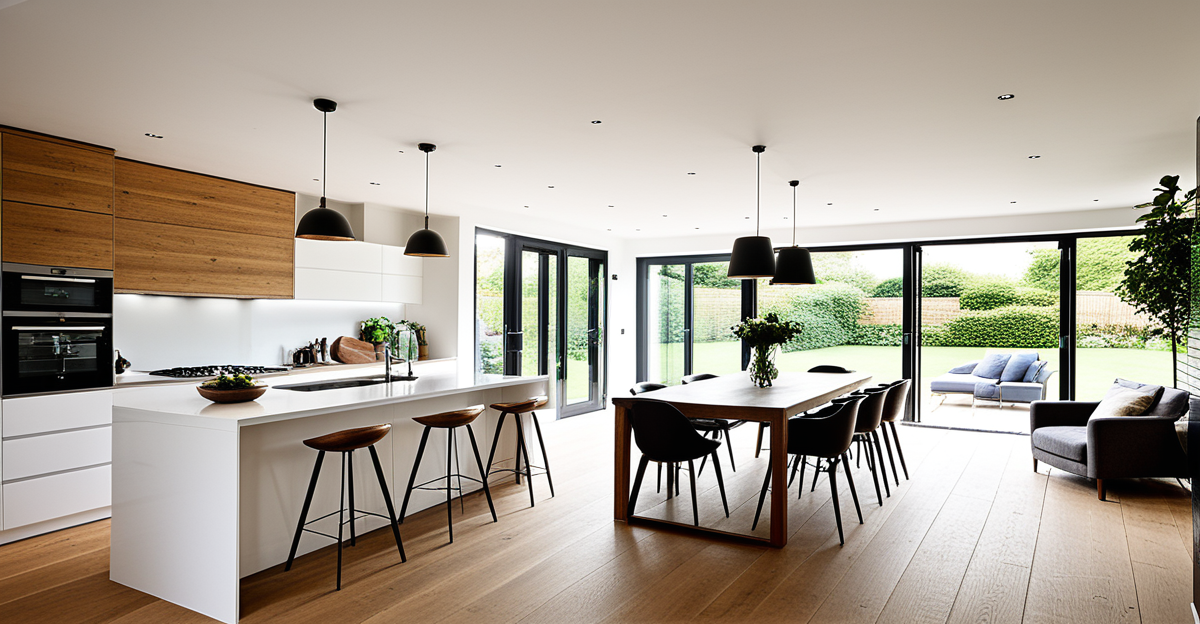Actionable Strategies for Creating More Space
Maximizing small spaces in UK homes often requires practical space solutions tailored to the unique challenges of terraces, flats, and compact houses. One highly effective strategy is to adapt interior layouts by prioritizing multifunctional solutions. For example, rearranging furniture to open up walkways and using pieces that serve more than one purpose can significantly increase usable space.
Visual tricks also play a crucial role in making rooms appear larger. Techniques such as employing light colours on walls, strategically placing mirrors, and ensuring ample natural light create an illusion of spaciousness. These approaches help to optimize perception without structural changes, vital in many UK properties where modifications may be restricted.
Have you seen this : How Can Sustainable Living Practices Transform Your Home Decor?
Moreover, practical space solutions often involve clever uses of vertical and hidden spaces. Focusing on functionality over ornamentation helps to avoid clutter. This allows small rooms to feel more open and inviting while maintaining essential living areas. Overall, adapting layouts with a focus on multifunctionality, accompanying them with visual enhancements, is key to maximizing small spaces in UK home design.
Innovative Storage Solutions for UK Properties
When aiming to maximize small spaces in UK homes, particularly terraces and flats, incorporating creative storage ideas is essential. One of the most practical space solutions is to build hidden storage into underutilised areas such as beneath stairs, beds, and window seats. These spaces often remain wasted but can significantly increase storage capacity without encroaching on living areas.
Also to discover : How Can Smart Home Technology Revolutionize Your Everyday Living Experience in the UK?
Wall-mounted and vertical storage solutions UK offer another smart approach. By shifting storage upwards rather than outwards, you free up valuable floor space, which is critical in smaller UK properties. Shelving units, hanging racks, and pegboards are excellent examples that keep items organised yet accessible while freeing up essential walking paths.
Incorporating storage within everyday furniture combines style with practicality. Think of ottomans with internal compartments, beds with built-in drawers, or coffee tables featuring hidden storage sections. These multifunctional furniture pieces contribute significantly to overall space efficiency, helping to maintain a clutter-free environment that feels larger and more inviting.
Together, these innovative storage solutions support smarter UK home design by enhancing usability without sacrificing aesthetics or living comfort.
Multipurpose and Space-Saving Furniture
Choosing the right space-saving furniture is pivotal for maximising utility in small UK homes. Items like sofa beds, extendable dining tables, and ottomans with storage provide dual functionality, addressing common space constraints while meeting daily living needs. A sofa bed, for example, transforms a living room into a guest bedroom without sacrificing comfort or style.
Fold-away, modular, or stacking furniture pieces are another category crucial for compact spaces in terraces and flats. These options enable flexible room arrangements, easily adapting to changing requirements such as entertaining guests or creating workspace areas. Modular units can be reconfigured, allowing each piece to serve multiple functions without occupying excess floor space.
Multifunctional furniture is essential for integrating with room layouts that demand versatility. Selecting pieces that combine seating, storage, and workspace in one can simplify small UK home design and reduce clutter. For instance, a dining table that extends when needed avoids overcrowding day-to-day, making small home essentials practical without feeling cramped.
Overall, prioritising multifunctional furniture enhances both form and function, directly supporting practical space solutions within constrained interiors.
Actionable Strategies for Creating More Space
Adapting interior layouts is critical when looking to maximize small spaces in UK homes, especially in terraces and flats where square footage is limited. Prioritising practical space solutions such as repositioning furniture to create clear walkways enhances both function and comfort. For instance, placing seating away from walls can open up a room, providing better flow and reducing cramped feelings without major renovations.
Visual tricks significantly aid in making rooms feel larger. Using light, neutral tones on walls and ceilings reflects natural light, brightening spaces and improving openness. Mirrors strategically placed opposite windows double light sources visually, while transparent elements like glass tables reduce visual clutter. These techniques fit well with UK home design restrictions, offering a non-invasive way to increase perceived space.
Multifunctionality should be the cornerstone of any spatial strategy. Furniture and room elements designed for multiple uses—such as benches with storage or fold-down desks—allow small homes to serve varied needs efficiently. This approach supports living areas that adapt seamlessly from work to leisure and socialising. Employing these combined tactics ensures compact UK interiors feel inviting and practical without overwhelming the space available.
Actionable Strategies for Creating More Space
Maximising small spaces in UK homes requires careful interior layout adaptation that respects the constraints of terraces and flats. Rearranging furniture to create clear pathways not only improves flow but also enhances daily usability, making rooms feel less congested. For example, angling sofas or positioning tables away from walls can open central areas, providing easier movement.
Visual enhancements remain an essential practical space solution. Employing light colours on walls and ceilings amplifies natural light, which is often limited in UK properties. Strategically placed mirrors reflect this light, creating an illusion of expanded space. Transparent materials such as glass tables or acrylic chairs reduce visual bulk, supporting a sense of openness without compromising function. These techniques align well with common UK home design limitations, avoiding permanent alterations while increasing perceived room size.
Prioritising multifunctional solutions adds versatility to compact interiors. Furniture that serves dual purposes, such as storage benches or desks that fold away, allows spaces to adapt to varying needs—work, leisure, or socialising. This practical approach helps homeowners in small UK homes optimise both comfort and efficiency. By combining thoughtful layout adjustments, visual tricks, and multifunctional elements, residents can successfully maximise small spaces without overwhelming their interiors.






